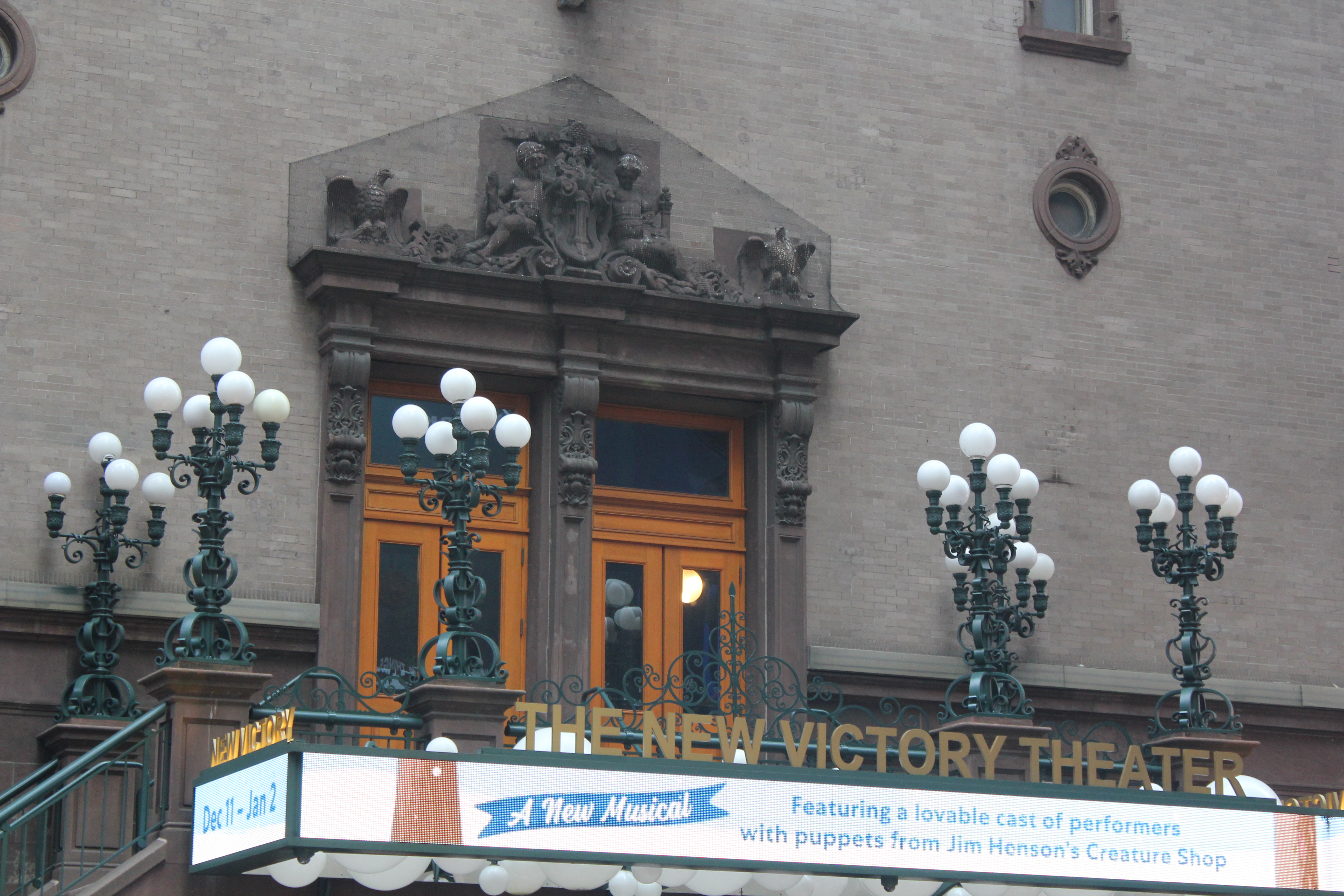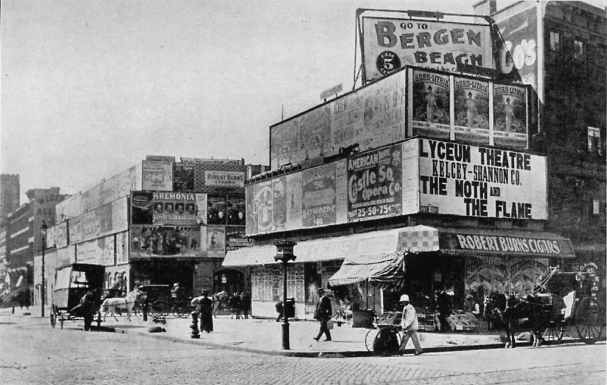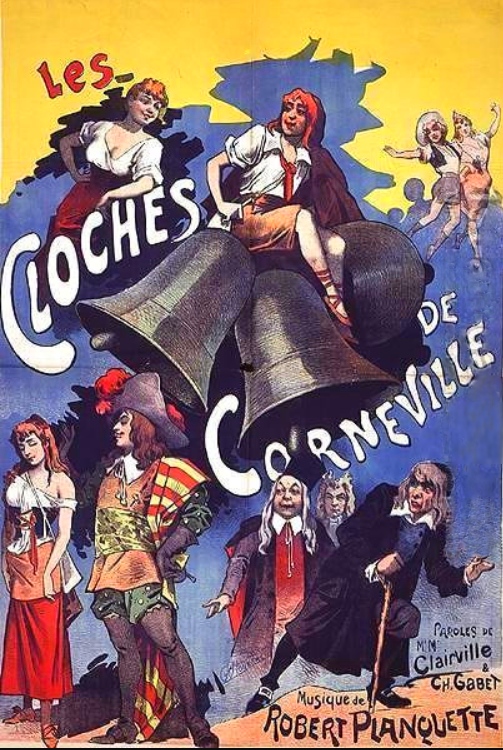|
Oscar Hammerstein I
Oscar Hammerstein I (8 May 18461 August 1919) was a German-born businessman, theater impresario, and composer in New York City. His passion for opera led him to open several opera houses, and he rekindled opera's popularity in America. He was the grandfather of American playwright/lyricist Oscar Hammerstein II and the father of theater manager William Hammerstein and American producer Arthur Hammerstein. Early life Oscar Hammerstein I was born in Stettin (capital of the province of Pomerania), Kingdom of Prussia (now Szczecin, Poland), to German Jewish parents Abraham and Berthe Hammerstein. He took up the flute, piano, and violin at an early age. His mother died when he was fifteen years old. During his youth, Hammerstein's father wanted him to continue with his education and to specialize in subjects such as algebra, but Hammerstein wanted to pursue music. After Oscar went skating in a park one day, his father found out and whipped him as punishment, goading Hammerstein to ... [...More Info...] [...Related Items...] OR: [Wikipedia] [Google] [Baidu] |
Oscar Hammerstein II
Oscar Greeley Clendenning Hammerstein II (; July 12, 1895 – August 23, 1960) was an American lyricist, librettist, theatrical producer, and (usually uncredited) director in the musical theater for almost 40 years. He won eight Tony Awards and two Academy Awards for Best Original Song. Many of his songs are standard repertoire for vocalists and jazz musicians. He co-wrote 850 songs. He is best known for his collaborations with composer Richard Rodgers, as the duo Rodgers and Hammerstein, whose musicals include ''Oklahoma!'', '' Carousel'', ''South Pacific'', '' The King and I'', and ''The Sound of Music''. Described by Stephen Sondheim as an "experimental playwright", Hammerstein helped bring the American musical to new maturity by popularizing musicals that focused on stories and character rather than the lighthearted entertainment that the musical had been known for beforehand. He also collaborated with Jerome Kern (with whom he wrote '' Show Boat''), V ... [...More Info...] [...Related Items...] OR: [Wikipedia] [Google] [Baidu] |
Szczecin
Szczecin (, , german: Stettin ; sv, Stettin ; Latin: ''Sedinum'' or ''Stetinum'') is the capital and largest city of the West Pomeranian Voivodeship in northwestern Poland. Located near the Baltic Sea and the German border, it is a major seaport and Poland's seventh-largest city. As of December 2021, the population was 395,513. Szczecin is located on the river Oder, south of the Szczecin Lagoon and the Bay of Pomerania. The city is situated along the southwestern shore of Dąbie Lake, on both sides of the Oder and on several large islands between the western and eastern branches of the river. Szczecin is adjacent to the town of Police and is the urban centre of the Szczecin agglomeration, an extended metropolitan area that includes communities in the German states of Brandenburg and Mecklenburg-Western Pomerania. Szczecin is the administrative and industrial centre of West Pomeranian Voivodeship and is the site of the University of Szczecin, Pomeranian Medical Uni ... [...More Info...] [...Related Items...] OR: [Wikipedia] [Google] [Baidu] |
Harlem Opera House
Harlem Opera House was a US opera house located at 211 West 125th Street, in the Harlem neighborhood of Manhattan in New York City. Designed by architect John B. McElfatrick, it was built in 1889 by Oscar Hammerstein; it was his first theater in the city. History An early work at the house was ''The Charlatan'', an operetta with music and lyrics by John Philip Sousa and a book by Charles Klein,Chessum, Tracey"Musical of the Month: ''The Charlatan''" Billy Rose Theatre Division, New York Public Library for the Performing Arts, September 16, 2011, accessed January 24, 2016 which transferred from the Knickerbocker Theatre. From 1900 to 1911, the theater was known as Keith & Proctor’s Harlem Opera House. Through the early 1920s, the venue was included in the Keith-Albee vaudeville circuit. By 1922, it was purchased by Frank Schiffman and subsequently closed. The Harlem Opera House showed films starting in the mid-1930s. It was demolished in December 1959. Architecture and fit ... [...More Info...] [...Related Items...] OR: [Wikipedia] [Google] [Baidu] |
Wallack's Theatre
Three New York City playhouses named Wallack's Theatre played an important part in the history of American theater, as the successive homes of the stock company managed by actors James W. Wallack and his son, Lester Wallack. During its 35-year lifetime, from 1852 to 1887, that company developed and held a reputation as the best theater company in the country. Each theater operated under other names and managers after (and in one case before) the Wallack company's tenure. All three are demolished. 485 Broadway James W. Wallack and Lester Wallack, father and son, were 19th century actors and theater managers; that is, entrepreneurs whose business was a theatrical stock company, a troupe of actors and support personnel presenting a variety of plays in one theater. Actor-managers, such as the Wallacks, were members of their own company. Often, a manager leased a theater from its owner, and since the building was deemed an important part of the playgoer's experience, typica ... [...More Info...] [...Related Items...] OR: [Wikipedia] [Google] [Baidu] |
David Belasco
David Belasco (July 25, 1853 – May 14, 1931) was an American theatrical producer, impresario, director, and playwright. He was the first writer to adapt the short story '' Madame Butterfly'' for the stage. He launched the theatrical career of many actors, including James O'Neill, Mary Pickford, Lenore Ulric, and Barbara Stanwyck. Belasco pioneered many innovative new forms of stage lighting and special effects in order to create realism and naturalism.Osnes, Beth, and Gill, Sam. ''Acting: An International Encyclopedia'', ABC-CLIO (2001) p. 34Marker, Lise-Lone, ''David Belasco: Naturalism in the American Theater'', Princeton Univ. Press (1975) Early years David Belasco was born in 1853 in San Francisco, California, the son of Abraham H. Belasco (1830–1911) and Reyna Belasco (née Nunes, 1830–1899), Sephardic Jews who had immigrated to the United States from London's Spanish and Portuguese Jewish community during the California Gold Rush. He began working as a youth in a ... [...More Info...] [...Related Items...] OR: [Wikipedia] [Google] [Baidu] |
New Victory Theater
The New Victory Theater is a theater at 209 West 42nd Street in the Theater District of Midtown Manhattan in New York City, near Times Square. Built in 1900 as the Republic Theatre (also Theatre Republic), it was designed by Albert Westover and developed by Oscar Hammerstein I as a Broadway theater. The theater has been known by several names over the years, including the Belasco Theatre, Minsky's Burlesque, and the Victory Theatre. The theater is owned by the city and state governments of New York and leased to New 42nd Street, which has operated the venue as a children's theater since 1995. The New Victory presents theater, dance, puppet shows, and other types of performance art from around the world. The New Victory Theater's modern design dates to a 1995 renovation; its facade reflects its appearance in 1900, while the interior incorporates details that were added when David Belasco took over the theater in 1902. The theater has a brick and brownstone facade with a ce ... [...More Info...] [...Related Items...] OR: [Wikipedia] [Google] [Baidu] |
Vaudeville
Vaudeville (; ) is a theatrical genre of variety entertainment born in France at the end of the 19th century. A vaudeville was originally a comedy without psychological or moral intentions, based on a comical situation: a dramatic composition or light poetry, interspersed with songs or ballets. It became popular in the United States and Canada from the early 1880s until the early 1930s, but the idea of vaudeville's theatre changed radically from its French antecedent. In some ways analogous to music hall from Victorian Britain, a typical North American vaudeville performance was made up of a series of separate, unrelated acts grouped together on a common bill. Types of acts have included popular and classical musicians, singers, dancers, comedians, trained animals, magicians, ventriloquists, strongmen, female and male impersonators, acrobats, clowns, illustrated songs, jugglers, one-act plays or scenes from plays, athletes, lecturing celebrities, minstrels, a ... [...More Info...] [...Related Items...] OR: [Wikipedia] [Google] [Baidu] |
Victoria Theater (Hammerstein's)
The Victoria Theatre (1899–1915) was a prominent American vaudeville house during the early years of the twentieth century. Theatre mogul Oscar Hammerstein I opened it in 1899 on the northwest corner of Seventh Avenue and 42nd Street, along New York City’s Longacre Square (now Times Square).“Hammerstein’s Victoria,” New York Times, 3 March 1899. The theatre was closely associated with the Paradise Roof Garden above it, and the two venues came to be known collectively as ''Hammerstein’s''.“Rialto Theatre to Close Tonight,” New York Times, 15 May 1935, 23. Construction Undaunted by the failure of his massive[...More Info...] [...Related Items...] OR: [Wikipedia] [Google] [Baidu] |
Times Square
Times Square is a major commercial intersection, tourist destination, entertainment hub, and neighborhood in Midtown Manhattan, New York City. It is formed by the junction of Broadway, Seventh Avenue, and 42nd Street. Together with adjacent Duffy Square, Times Square is a bowtie-shaped space five blocks long between 42nd and 47th Streets. Brightly lit at all hours by numerous digital billboards and advertisements as well as businesses offering 24/7 service, Times Square is sometimes referred to as "the Crossroads of the World", "the Center of the Universe", "the heart of the Great White Way", “the Center of the Entertainment Universe”, and "the heart of the world". One of the world's busiest pedestrian areas, it is also the hub of the Broadway Theater District and a major center of the world's entertainment industry. Times Square is one of the world's most visited tourist attractions, drawing an estimated 50 million visitors annually. Approximately 330,000 peopl ... [...More Info...] [...Related Items...] OR: [Wikipedia] [Google] [Baidu] |
The New York Times
''The New York Times'' (''the Times'', ''NYT'', or the Gray Lady) is a daily newspaper based in New York City with a worldwide readership reported in 2020 to comprise a declining 840,000 paid print subscribers, and a growing 6 million paid digital subscribers. It also is a producer of popular podcasts such as '' The Daily''. Founded in 1851 by Henry Jarvis Raymond and George Jones, it was initially published by Raymond, Jones & Company. The ''Times'' has won 132 Pulitzer Prizes, the most of any newspaper, and has long been regarded as a national "newspaper of record". For print it is ranked 18th in the world by circulation and 3rd in the U.S. The paper is owned by the New York Times Company, which is publicly traded. It has been governed by the Sulzberger family since 1896, through a dual-class share structure after its shares became publicly traded. A. G. Sulzberger, the paper's publisher and the company's chairman, is the fifth generation of the family to head the p ... [...More Info...] [...Related Items...] OR: [Wikipedia] [Google] [Baidu] |
Santa Maria (operetta)
''Santa Maria'' is an operetta, or 'comic opera', in three acts with music and lyrics by Oscar Hammerstein I. It opened at Hammerstein's Olympia Theatre in New York City on September 14, 1896. After closing on December 19, 1896, it went on tour, starting at the Alvin Theatre in Pittsburgh, Pennsylvania, on December 21, 1896. The final scene, in which Bertrand and Santa Maria are proclaimed future King and Queen, was set as a "Palace of Ice" constructed from aluminum, a novel design for 1896."Olympia Theatre Opened; ''Santa Maria'', by Oscar Hammerstein, Done in a Showy Way" ''The New York Times'', September 25, 1896, p. 3 Edna May, who wou ... [...More Info...] [...Related Items...] OR: [Wikipedia] [Google] [Baidu] |
Comic Opera
Comic opera, sometimes known as light opera, is a sung dramatic work of a light or comic nature, usually with a happy ending and often including spoken dialogue. Forms of comic opera first developed in late 17th-century Italy. By the 1730s, a new operatic genre, '' opera buffa'', emerged as an alternative to ''opera seria''. It quickly made its way to France, where it became ''opéra comique'', and eventually, in the following century, French operetta, with Jacques Offenbach as its most accomplished practitioner. The influence of the Italian and French forms spread to other parts of Europe. Many countries developed their own genres of comic opera, incorporating the Italian and French models along with their own musical traditions. Examples include German ''singspiel'', Viennese operetta, Spanish ''zarzuela'', Russian comic opera, English ballad and Savoy opera, North American operetta and musical comedy. Italian ''opera buffa'' In late 17th-century Italy, light-hearte ... [...More Info...] [...Related Items...] OR: [Wikipedia] [Google] [Baidu] |








.png)

